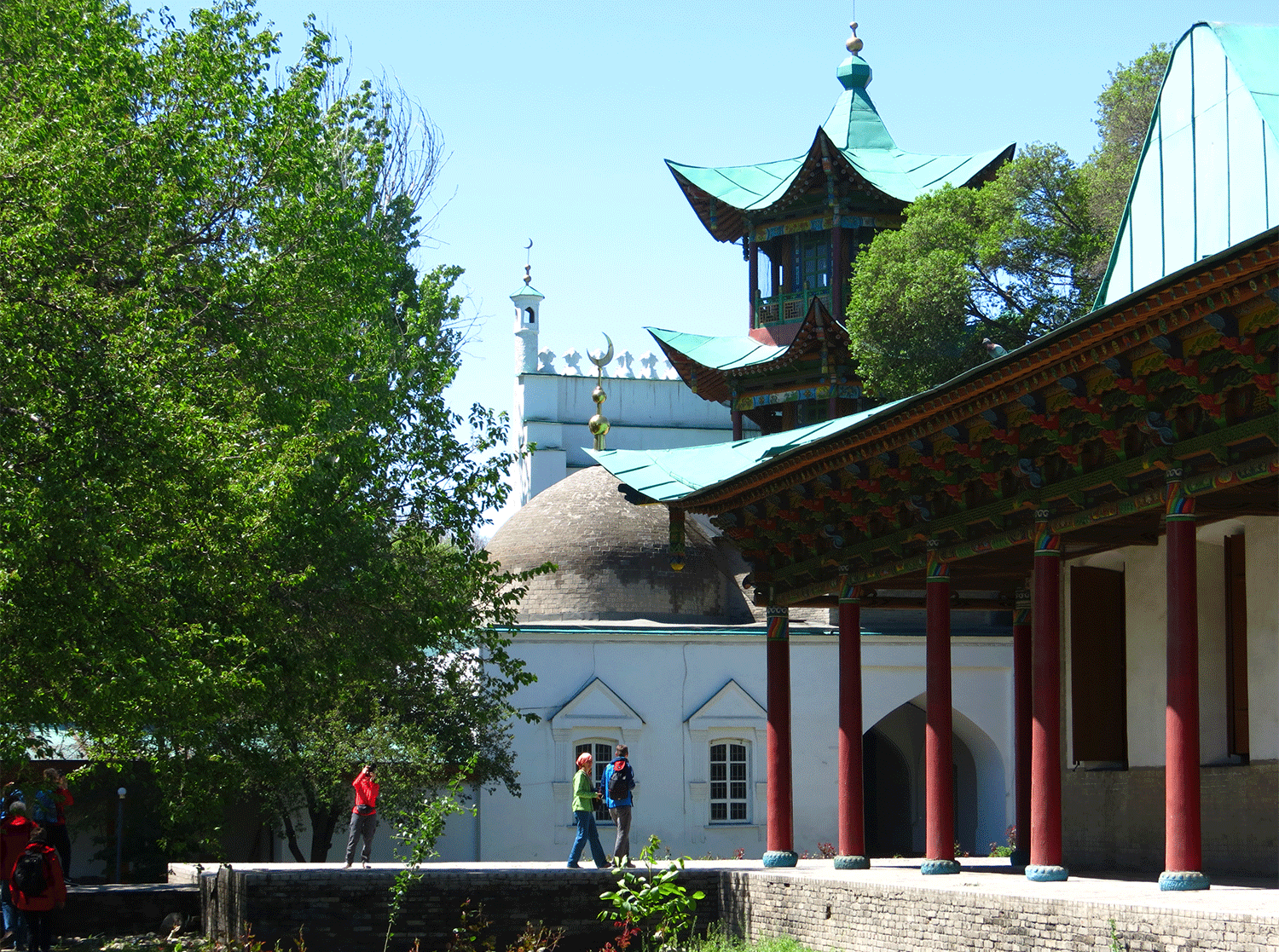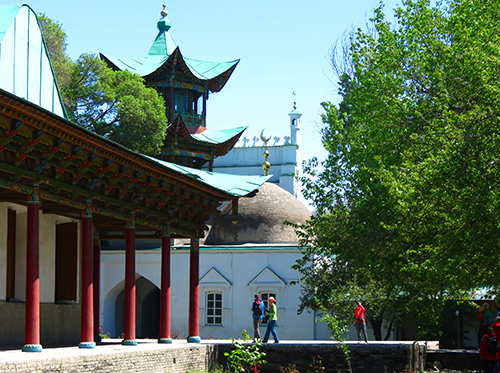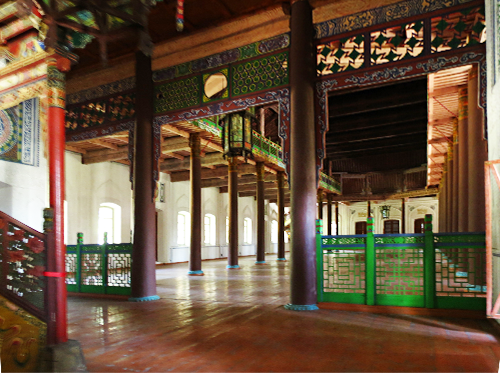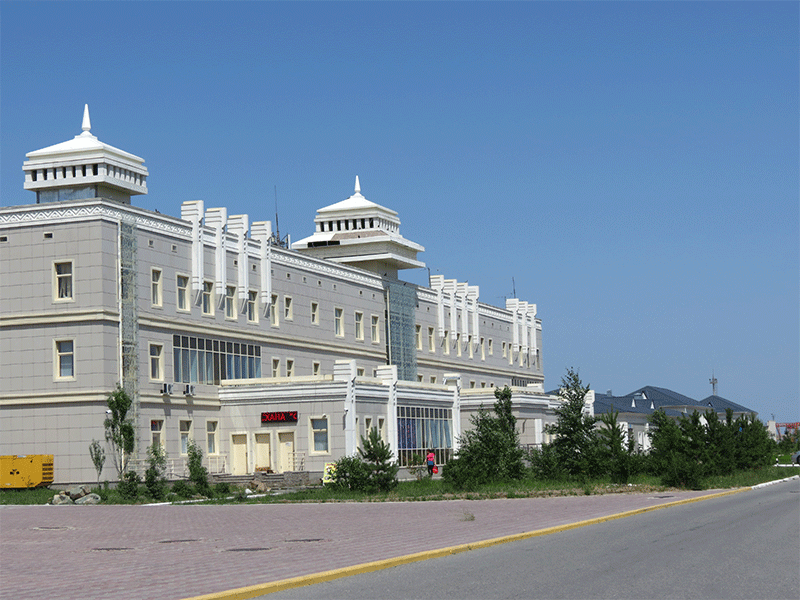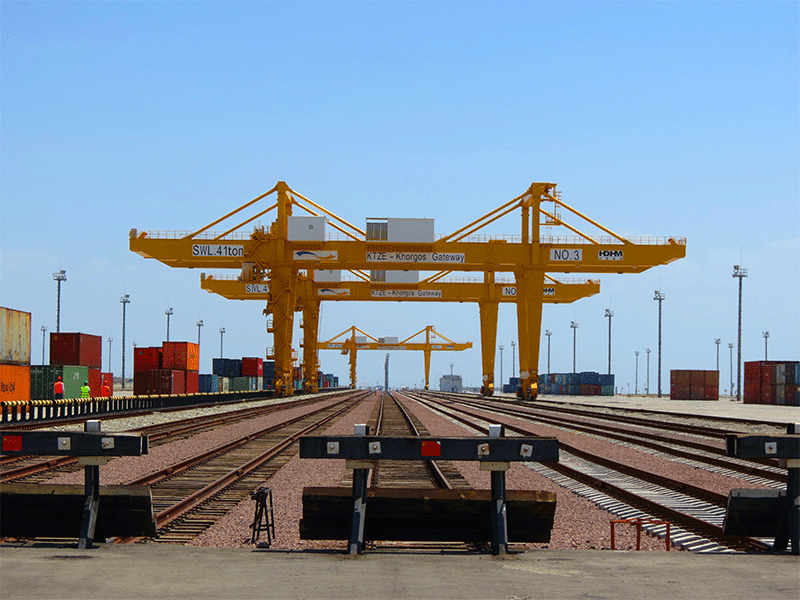ZHARKENT (PANFILOV)
Today, the Zharkent city is an important settlement for trade with China. But a dozen and a half years ago, it was in a closed border territory, for entering which it was required to issue a special pass. The construction of Zharkent began in the 1880s. It all started with laying a huge canal from the river Usek. Then the future streets, squares and lanes of the settlement were planned. It is noteworthy that the original layout has been preserved today! Gradually, the city grew, absorbing the nearest Dungan villages. Moreover, this was the fate the famous estate of the Taranchinsky prince of a wealthy citizen of the city – Vali Akhun Yuldashev. The construction of a unique architectural object is associated with the name of this person. And not only for the city of Zharkent, but also for the region as a whole.
Zharkent mosque. This is a stunning architectural monument of the 19th century. The construction of the facility began almost immediately after the city foundation. The idea appeared in 1887 at a meeting of the local Muslim community. People decided to raise funds for the construction of a mosque. The initiative was shown by the richest man in the city – Uighur Vali Akhun Yuldashev. They say that he made an initial contribution of 300 thousand rubles, which in those days was considered a huge amount. Five years before the meeting, he moved to Zharkent from Kuldzhi city, which was captured by the Chinese. He immediately began to do many useful things for the city. In particular, he founded the first navigation on the Ili River. Having built together with engineer Pokleevsky – Coello is one of the first steamboat in these parts. And at the very end of the 19th century, it was Mr. Yuldashev who was the delegate from the region in St. Petersburg, where the famous magnificent coronation ceremony of Nicholas II took place.
Hundreds of experienced craftsmen from various parts of the world were invited to build the facility. Moreover, remembering the tower of Babylon, it was decided to hire translators so that the builders could clearly coordinate their work. An experienced architect from China, Hon Peak, was invited to design the mosque. Rumor has it that when the great specialist returned to his homeland, the authorities executed him. The leadership of China considered that the mosque he created in Zharkent was more beautiful than all similar objects in the Middle Kingdom.
Construction work was completed in 1892. Hong Peak did its best. The mosque in Zharkent was built using traditional Asian and Arabic styles. The unique soaring roof turned out to be especially chic. Its characteristic feature is the ends of the ramp bent to the upper part. The gallery, decorated with original cylindrical columns and the widest cornice, looks great.
The roof is created by means of strong wooden beams and special elements “Dow” and “gun”. They serve to bend the cornice. That is why the roof seems to soar in the air, causing a surge of delight among tourists looking at it from below. The connections between the wooden elements are made without the use of nails, which provides another zest of the object.
The main hall of the mosque looks very solid – it can accommodate about a thousand people. The surfaces of arches and walls are decorated with unusual openwork paintings and carvings. The creators of the project reasonably decided that the most logical way to decorate the surface with plant motifs, although you can find images of animals and representatives of the feathered world, as well as fantastic creatures. Islamic mosques are opened at the mosque in Zharkent. And next to the unique attraction there was once the house of the honorary Mr. Yuldashev.
The size of the structure is impressive. The length of the mosque is 54.5 meters, the width is 29, and the height of the highest tower is 22.
The object was constantly tested by nature. For example, in 1910, powerful tremors caused significant damage to the mosque. And in 1965 it had to withstand a severe hurricane. From 1948 to 1949, the first detailed investigation of the object was carried out, after which it was taken under state protection. After visiting the mosque, the first secretary of the Central Committee of the Communist Party of the Republic – Dinmukhamed Kunaev, in 1970 it was decided to conduct a thorough restoration and restoration. And after that, the Zharkent Mosque complex appeared, which to this day is the greatest monument in Central Asia.
The Church.
Not far from the mosque is a very beautiful and magnificent building of the Orthodox Church of St. Nicholas. In another way, local residents call the object “St. Nicholas Church”. It is an exciting proof that in Zharkent they tolerate all religions, including Christianity.
Based on archival data, the decision to erect the building was made by the local Cossacks on August 12, 1882. That is, when the city was already built. The initiative of the Cossacks was supported by the minister of the church Beloyarov. He was the leader of the Orthodox Church in the Chinese city of Gulja. Beloyarov offered all his money for the construction of the temple – he had 4 thousand rubles. Another 5 thousand rubles for the construction of a religious building was donated by merchant Somov. Despite the generosity of some citizens, money was lacking, so the construction process dragged on.
The church, built only in 1892, was called the military (the builders were soldiers). As a material, high-strength wood from the Tien Shan spruce was used, the foundation was built of stone. In the days of the USSR, the church was closed and used for household purposes. Today it is a working temple in which tourists and travelers come.
Historians have repeatedly noted that in this region there has long been trade between representatives of different nations. Inhabiting the southeastern part of Kazakhstan. Therefore, the area has a lot of historical and architectural monuments dedicated to a variety of peoples and religions. All these unique objects are carefully protected by the state and are very popular with numerous tourists.
Khorgos border check point
It is the largest automobile border post. It is located on the territory of Khochen Ili County. In ancient times, Khorgos was a key trading point, because it was in this place that the northern part of the famous Silk Road passed. According to historians, the turnover of goods transported by road for the calendar year was about one million tons. The passenger turnover was also impressive – about 500 thousand people. On March 1, 1989, an international passenger auto service was opened on the route “Inin-Tsnshuihe-Zharkent of Kazakhstan”, and on March 1, 1993, the direct international bus route “Urumqi-Almaty” was opened. The Khorgos pint is open all year round.
On the first day of spring of 1989, passenger automobile traffic was opened along the most important route, the “Inin-Jenshuihe-Dzharkent”. Four years later, another key Urumqi-Almaty bus route opened. Due to the importance of this site, it works year-round. It also represents a place for international transit transportation. The border crossing point keeps being expanded and modernized. Today, for example, a border village has been built nearby. There is also a commodity market created for the mutual trade of residents living near the border. The area of this trade center is 1 million square meters.
Khorgos has a favorable location. It is about 30 kilometers to Jungshuihe, about 100 kilometers to Pnip city, and 670 kilometers to Urumqi. In the vicinity is Zharkent city (no more than 35 kilometers). 380 kilometers from the automobile border post is Almaty.
Nurkent dry port.
The city of Nurkent is the most important point of transnational significance on the modern map of Kazakhstan. It is located in the Panfilov district. “Dry Port” is a project that was implemented as part of a program of early industrial and innovative development, which was developed by the authorities of Kazakhstan for the economic prosperity of the state. Thanks to the “Dry Port”, this country in Central Asia has become a powerful logistics center in the region.
The village is located less than ten kilometers from the Altynkol station. Actually, it is as new as the city of Nurkent itself. It is often called the “junior assistant” of the famous customs office “Dostyk”. It is here that every day you have to inspect a huge amount of cargo (tens of thousands of tons). They are delivered by trains with containers that travel from China to Europe, Central Asia, and other countries. And both there and back.
You can visit Zharkent, Nurkent and other nearby settlements at any time of the year.
 |
Season – Year-round |
| Duration: | Duration:two – three days |
| Cost: | Cost:200 000 KZT per car (independent of the number of people).
Meals and accommodation are payed for separately. |
| Tour includes: | Tour includes:
|
| Payment: | Payment: should be made no later than a day before the trip. You can pay in cash, by credit card or by bank transfer. In case you refuse the trip less than 24 hours prior to its start – 50% of the price will be deducted |

